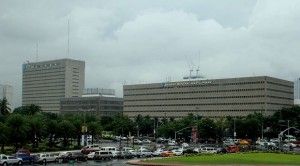The adjustment in key rates was kept on hold yesterday as the Bangko Sentral ng Pilipinas (BSP) saw more stable consumer prices through 2016.
As expected, the BSP kept its overnight borrowing and lending rates, as well as reserve requirements for banks and special deposit account (SDA) yields, allowing previous adjustments to “work their way in to the economy.”
The Monetary Board’s decision is … based on the baseline projections indicating within-target inflation for the policy horizon,” BSP Governor Amando M. Tetangco Jr. said.
A poll by the Inquirer this week showed that all banks expected the BSP to keep the key rates steady.
In maintaining the key rates, the BSP also said it expected the US Federal Reserve to drag its feet in shifting to tighter monetary settings, giving policymakers worldwide more breathing room.
The central bank’s main goal is to keep consumer prices stable to protect the peso’s purchasing power. This is done by influencing the amount of money circulating in the economy, and the cash lent by banks to consumers and businesses.
For 2014, the BSP sees inflation averaging at 4.4 percent, lower than the previous projection of 4.5 percent. This is within, although above the midpoint, the central bank’s target range of 3 to 5 percent.
In 2015 and 2016, the BSP sees inflation at 3.7 percent and 2.8 percent—within the 2 to 4 percent target range for both years.
Tetangco said the “balance of risks” to inflation was broadly even, with upward pressures coming from possible utility rate hikes and power shortages being offset by lower fuel and food costs.
The central bank’s decision Thursday was in contrast to its recent moves to tighten liquidity and raise the cost of money circulating in the economy.
In April and May, banks were told to set aside more of their clients’ deposits as reserves. Hikes in policy rates and SDA yields were also undertaken to encourage banks to park more of their idle cash with the BSP. In recent months, inflation also rose steadily—peaking at 4.9 percent in July and August—due to supply-side shocks that drove up food prices.
These factors were the port congestion in Manila—a result of the city government’s daytime ban on trucks plying its streets—and the lingering effects of Supertyphoon “Yolanda,” which hit major food producing areas in November last year.
